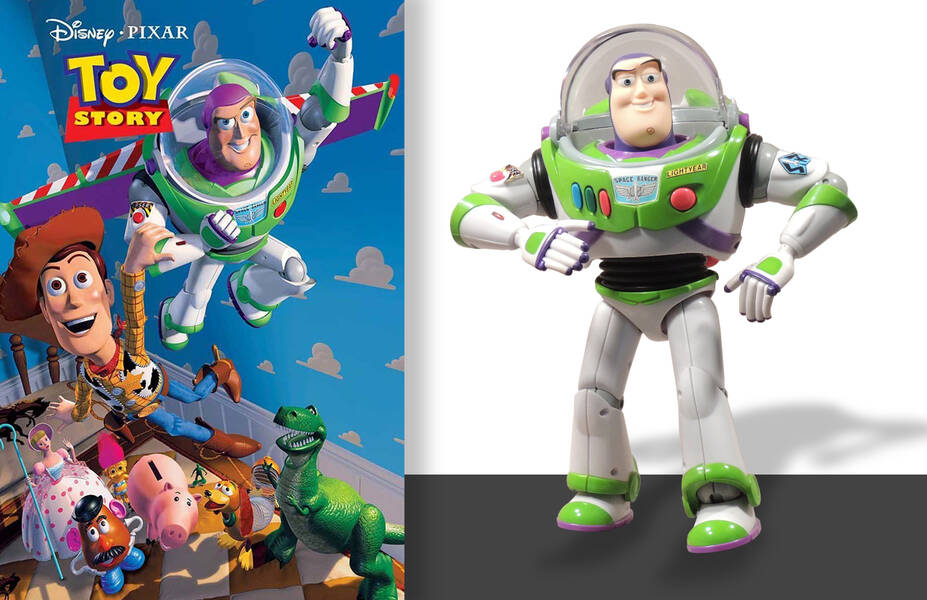
Product Design alumnus and Professor Roosevelt Brown empowers students to succeed
“The glorious gift of education is empowerment,” Product Design alumnus and Associate Professor Roosevelt “Rose” Brown (BS 95) likes to tell his students. “How much power do you want, and how bad do you want it?”
A footwear and product designer whose 25-year-long career includes designing the action figure based on Toy Story’s Buzz Lightyear, as well as sneakers for Puma, Dada, Speedo, Brooks and Nike, Brown not only believes in the power of design, but he is also a huge advocate of the importance of education—and of access to it.

That’s part of my passion—to give back by teaching, especially to underrepresented students.
Roosevelt BrownProduct Design alumnus and associate professor

In June, Brown and Vice President and Chief Diversity Officer Aaron Bruce launched an initiative between ArtCenter and the youth development nonprofit Brotherhood Crusade. The aim of the collaboration is to provide free online Sneaker Science workshops to middle and high school students to encourage them to pursue higher education degrees and design opportunities.
“I want to show them that a Black man, somebody who looks like them and came from a community like theirs, has success at a corporate level,” Brown says via Zoom, from his den-turned-work studio in Rialto. Prototypes of the sneakers he has designed are displayed on what he playfully calls his “design wall of fame.” “Despite having been denied opportunities,” he says, “you can still succeed.”
On an early August afternoon, Brown lectures on manufacturing for the course COVID-19 Rapid Test Unit, with 30 ArtCenter students across different majors and countries—including South Korea, China and Singapore—participating on Zoom. Co-taught with Associate Professor Jeff Higashi (BS 95 Product), Professor Babette Strousse and Associate Professor Jini Zopf (BFA 00 Illustration), it’s a crash course in preparing a working prototype for manufacturing and launch.
Later, in a breakout group, Brown—who also regularly teaches Product Design 4—and Strousse address the project Monu, created by students Reiten Chang, Grace Susilo and Morgan West. A hooplike earring, it’s embedded with tech designed to monitor the health of the wearer. The question of whether Monu should be for one or both ears leads to a discussion about fashion versus medical accessories. “Fashion is ‘I care about my outward expression and what you see,’” Brown tells the students.
Brown’s own path to ArtCenter was not a direct one. Growing up in Pasadena, he could see from his family’s front door ArtCenter’s Hillside Campus and its 192-foot-long bridge being built in the 1970s. He and his friends thought the bridge was part of the 210 Freeway. He honed his artistic skills in a “relatively tough neighborhood,” he says, drawing Snoopy and spaceships. He wanted to be an athlete but was small for his age. “But I knew I could draw, and I had a big imagination,” says Brown.


Being part of the Boys and Girls Club of Pasadena introduced him to working in a model shop, and he became a “little jewelry maker,” he says, selling rings and necklaces. As a teenager enthralled with hip-hop culture, he did graffiti art and printed T-shirts, while also working at his uncle’s shop as a precision machinist. Despite his creative output, counselors at his high school—and even counselors at the community and state colleges he later attended—did not tell him about ArtCenter.
When asked why, he’s clear in his answer: “Systemic racism,” he says. “They were quick to tell me about vocational programs, but never once mentioned there was a design school in Pasadena with this discipline called industrial design.”
It wasn’t until one of his professors told him about ArtCenter that he drove up to the Hillside Campus, going underneath its lengthy bridge, and everything clicked. His tour of the Student Gallery “was like freakin’ Christmas,” he says. After pulling together a portfolio from scratch, he applied and was accepted into the College.
“ArtCenter profoundly transformed my life,” says Brown. He cites late Product Design Chair Marty Smith as his biggest advocate. A digital tablet he designed as part of a Sponsored Project for Wacom landed him in New Talent Design Annual 1998. Before graduating, he also won a design contest sponsored by Timex.

Yet his time at the College was also isolating, since he was one of only a few Black students on campus. Brown argues that ArtCenter—like then—needs to grow and change. “There are no excuses. Just do it. Recruit Black students, recruit Black faculty,” he says. “Change happens when every person looks in the mirror and asks, ‘What can I do to make this better?’ Then does it.”
Brown designed toys for Disney Pixar for 10 years before jumping into footwear design. He’s designed running shoes for Brooks, basketball sneakers for Nike and boxing shoes for Everlast. He cites as his favorite project a black high-top sneaker he designed for the Jimi Hendrix Foundation that features purple velvet lining (an ode to Hendrix’s “Purple Haze”), with guitar picks on the soles.
“I believe in taking your talent and fostering it into skill sets,” says Brown. “That’s part of my passion—to give back by teaching, especially to underrepresented students. Being a designer has been everything that I only dreamed about.”














